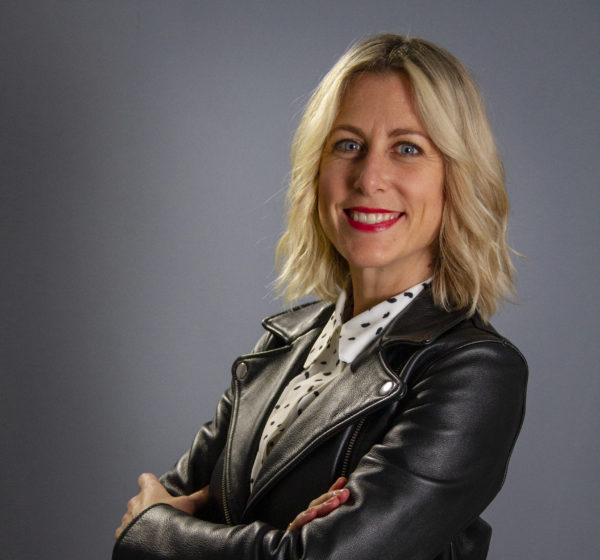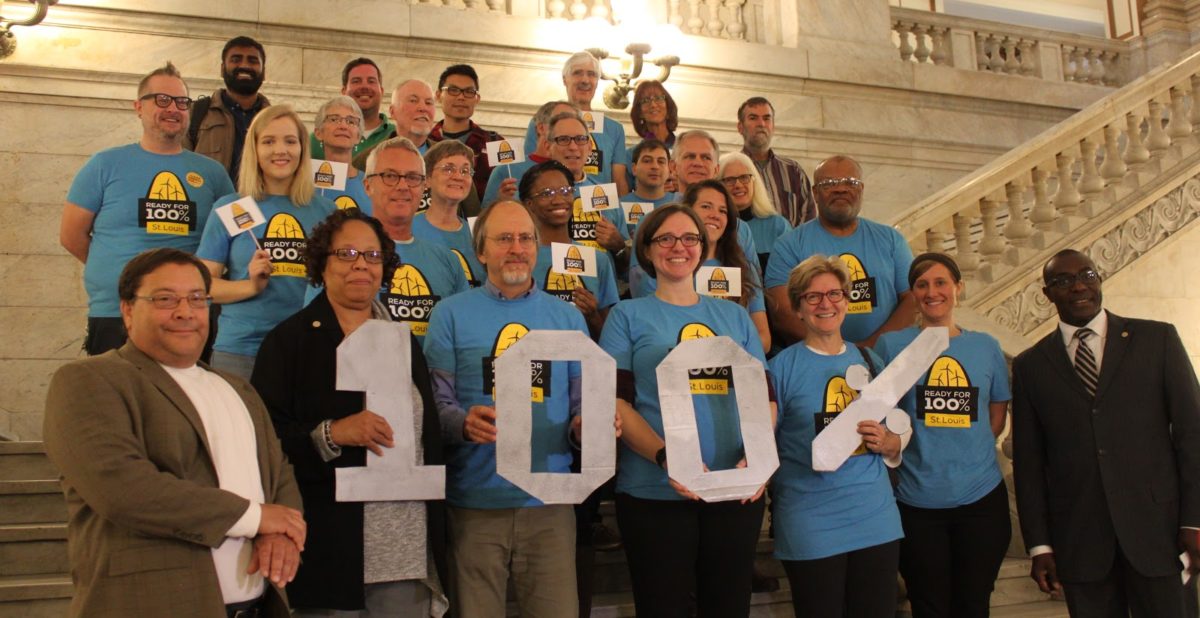 pv magazine: Can you talk about how the Ready for 100 campaign came about, and how it relates to previous energy campaigns such as Beyond Coal?
pv magazine: Can you talk about how the Ready for 100 campaign came about, and how it relates to previous energy campaigns such as Beyond Coal?
Jodie Van Horn: The Ready for 100 campaign grew out of communities’ demand for cleaner air, more affordable electricity, and bold climate action. Campaigns like Beyond Coal have successfully worked to help break our country’s reliance on dirty fuels. Ready for 100 is focused on creating the cleaner, healthier, more affordable energy future we want in our communities. Our goals reinforce each other.
When we launched in 2016, the country lacked the ambition required from state and federal policymakers to scale clean energy at the rate needed to confront the climate crisis. When Trump was elected, things got far worse. In that moment and ever since, cities and towns have stepped up and filled the void, demanding clean energy and showing that a transition away from fossil fuels isn’t just an obligation, but an opportunity to create jobs, to protect our environment and to lower electricity costs.
pv magazine: You talk about the ambition lacking from state and federal policymakers. I know that over the last year we’ve seen California set a 100% clean energy mandate, and we’ve heard a lot of ambitious announcements around the last election. Do you think that at the state level we have the necessary ambition now, or is it still lacking?
Van Horn: The United States’ climate policy follows the lead of states, and states are following the lead of their local communities. Today 100% clean energy is the new normal. Over 100 cities, two states (California, as you mention, and Hawaii), and the nation’s capital have adopted this goal. More than 1400 candidates ran on 100% renewable energy platforms in 2018. That local leadership is now showing up in national climate conversations..
Utilities are also beginning to respond to demand from their customers. We’ve seen this most recently with Xcel Energy, which announced it’s going 100% carbon-free as a result of clean energy commitments from cities in its service area. I believe 100% renewable energy will continue to be a critical issue in conversations about our economy, about climate action, and about the evolution of our energy system. As 11 governors now publicly support it, we are going to organize for ambition in states, and 100% renewable energy truly will be unstoppable in the years to come.
pv magazine: You know that we’ve published an article that is titled “100% renewable energy is unstoppable?”
Van Horn: (laughs) I did not know that! You were spot on.
pv magazine: I’ve noticed that a lot of climate activists focus on stopping fossil fuel infrastructure, but not as much on supporting the transition to renewable energy. Why do you think this is, and why has Sierra Club chosen to feature a more proactive strategy among multiple strategies?
Van Horn: It’s not enough to say no to dirty, expensive, and outdated fossil fuels. We have to innovate new ways to power this country. And Sierra Club knows that we have to say yes, and doggedly pursue healthy and affordable existing solutions like wind and solar. The technology is there, the public will is there. The challenge is to ensure the energy transition benefits everyone.
The clean energy economy is not going to be a one-size fits all solution. It will be built community by community, city by city, and state by state. Ready for 100 is a movement of students, business leaders, faith leaders, mayors and community members in hundreds of cities and towns across the country, working to ensure that the move away from fossil fuels to an economy powered entirely by clean and renewable energy doesn’t replicate the inequities of the current system. Renewables pose an opportunity to create a better energy future for everyone. It’s a necessary complement to the work that’s underway to stop the bad.
pv magazine: Can you talk about the progress of Ready for 100 in the past few years. When this was started in 2016, did you imagine that this issue would be as prominent as it is today?
Van Horn: We launched Ready for 100 to help the 100% renewable energy movement be seen and scaled, and to show that communities really do have solutions. Solar and wind are cheaper than fossil fuels in many parts of this country, and we know that a majority of Americans want to see 100% renewable energy realized.
So we set out to make 100% clean energy the benchmark of ambition, and demonstrate to decision-makers at all levels that it’s time for clean and renewable energy technologies to be deployed, for ambitious policy-making, to lead us to a cleaner, healthier, and cheaper energy system.
What we didn’t foresee is the wave of local action that would follow first the election of Donald Trump and second the announcement that the Trump Administration would pull out of the Paris Climate Agreement. That spurred an incredible amount of leadership from the local level, as cities and towns all across the country said, “Look. We are going to continue to move forward with bold and ambitious plans, and a commitment to solving the climate crisis – despite, or perhaps to spite, the climate deniers in the current administration.” Mayors are already dealing with the effects of sea level rise, of drought and wildfires, of erratic weather patterns, and their engagement with Ready for 100 shows they’re willing to take bold action to address it.
pv magazine: The 100% renewable energy movement gets a lot of criticism in energy circles, particularly from nuclear advocates and others who say that some technologies is being un-necessarily left out. Why did Sierra Club choose to focus on renewables and not all zero-carbon technology, and what are your responses to the critique that we are not taking advantage of all options?
Van Horn: The transition to 100% clean energy is an opportunity to put power back into the hands of local families, businesses, and residents, and that means pursuing a path to renewables, which we can do with technology that is already available.
Our campaign focuses on clean, safe, and affordable energy sources, and nuclear is none of those. Visit communities living downwind and downstream of uranium mining or radioactive waste dumping and you will see how people of color — frequently Native American communities — have suffered from these claims. So we focus on a renewable energy system that is ready now, and that has widespread support from the American public.
pv magazine: What’s next for Ready for 100?
Van Horn: We’re living at an exciting moment. Today, one in seven Americans – 15% of the U.S. population – lives in a place that will be powered by clean energy in the next couple of decades.
Local leaders know that moving to 100% renewable energy will protect our kids and families from pollution, it will create new jobs and economic opportunities, and it can ensure that all people have access to affordable energy solutions. So the work ahead is about being intentional in implementing an energy transition to not only transform how we power our country, but who has power to decide what is best for our communities.
If we focus on a clean energy system that is equitable, just, and affordable, we will truly achieve the vision of the Ready for 100 campaign over the next few years. Our focus will be on supporting local communities in realizing their goals, and in taking the ambition of 100% renewable energy to the state level, to ensure that we accelerate the transition that Americans are demanding across the country
pv magazine: You have mentioned climate change several times here. When I look at the statement by the IPCC that we need to massively decarbonize by 2030, and when I look at the various roadmaps I’ve seen for getting to 100% renewable energy nationwide, it appears that we need to be deploying wind and solar multiple times faster than we are now. Somewhere in the range of 5-7x as fast. How do we scale to meet the urgency of this crisis?
Van Horn: When it comes to clean energy, success begets success. Utilities are already responding to the demands of their customers, and city commitments are spurring the development of new solar and wind energy projects. Cities are beginning to engage proactively in discussions with utilities and energy regulators. Those conversations are resulting in decisions that align more closely with the public’s strong support of renewable energy, and the urgent need to scale at a faster pace.
Cities and states are building an energy future that can meet these challenges. And as we see more ambition in our cities and at the state level, over the next two years, we are setting up for what is to come post-2020, should there be changes to our federal government. If we get a pro-environment administration that’s willing to build upon all the progress happening locally, we’ll have a fighting chance.
Interview conducted by pv magazine Americas Editor Christian Roselund.
This content is protected by copyright and may not be reused. If you want to cooperate with us and would like to reuse some of our content, please contact: editors@pv-magazine.com.









By submitting this form you agree to pv magazine using your data for the purposes of publishing your comment.
Your personal data will only be disclosed or otherwise transmitted to third parties for the purposes of spam filtering or if this is necessary for technical maintenance of the website. Any other transfer to third parties will not take place unless this is justified on the basis of applicable data protection regulations or if pv magazine is legally obliged to do so.
You may revoke this consent at any time with effect for the future, in which case your personal data will be deleted immediately. Otherwise, your data will be deleted if pv magazine has processed your request or the purpose of data storage is fulfilled.
Further information on data privacy can be found in our Data Protection Policy.